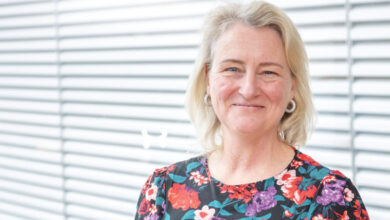Digital Economy Act update
 The UK Government is still finalising the Digital Economy Act’s implementation, which aims to protect artists’ copyright online and which extends to Northern Ireland. agendaNi reports.
The UK Government is still finalising the Digital Economy Act’s implementation, which aims to protect artists’ copyright online and which extends to Northern Ireland. agendaNi reports.
The internet copyright debate exploded in 2010 when the Labour Government, in its final days in power, rushed through the Digital Economy Act which would see illegal downloaders being sent letters by the internet service provider requiring them to provide details of all the downloaded material.
The Act would:
• include those guilty of internet piracy on a list of infringers if they are identified multiple times;
• make them pay £20 to mount an appeal; and
• allow for court injunctions requiring service providers to block access to websites that are used to infringe copyright.
Secondary legislation would be required before “technical sanctions” such as slowing or cutting an internet connection could be implemented.
The Act automatically extended to England, Scotland, Wales and Northern Ireland when it received royal assent on
8 April 2010. Two transferred matters had required a legislative consent motion, which was endorsed by the Assembly without a vote on 11 January 2010. These were the classification of video games (i.e. ensuring they are appropriate for different ages) and the public lending right (whereby authors will receive proper payment for loans from libraries, including books, audio and e-books.)
That Act became the responsibility of the Department for Culture, Media and Sport (DCMS) Minister for Culture, Communications and Creative Industries Ed Vaizey in May 2010.
In December 2011, he told Parliament that “it is incumbent on the Government to do all we can to protect the property of those who create music, films and the content of television programmes, which we all enjoy.” It is also important to remember that online piracy affects, not just the famous people in those industries, but film technicians, sound engineers or up-and-coming musicians. It must be curbed, he said, because it is “basically theft of the property that those hard-working British people create.”
Two statutory instruments were drafted by the Coalition Government: one to set out the way in which the costs of the provisions will be shared by industry and one to set out the initial obligations code for Ofcom.
As it stands, the costs order states that, if a movie, music or publishing company (i.e. copyright owner) identifies users who have illegally downloaded its content, the internet service provider must notify the individual. The costs of that process should be borne 75 per cent by copyright owners and 25 per cent by internet service providers. Costs incurred by the regulator or the appeals body will be borne 100 per cent by copyright owners. People seeking an appeal will be required to pay a fee of £20 which will be refunded if the appeal is successful.
The two statutory instruments were delayed by an application by BT and Talk Talk for a judicial review of the online infringement of copyright provisions in the Act. The Court of Appeal upheld these provisions on 6 March 2012.
Despite this, the Government must amend the costs order in relation to appeal case fees and Ofcom must amend the initial obligations code. Vaizey hopes that by June, the statutory instrument on costs will be laid before the House of Commons and that the obligations code will be ready for consultation. Both will have to be notified to the European Commission under the terms of the Technical Standards Directive and the final version of the code should be ready by the end of this year.
The Technical Standards Directive aims to eliminate or reduce the barriers to the free movement of goods which can arise from the adoption of different national technical regulations.
DCMS has insisted that the letters will “offer advice about legitimate sources of digital content” and aim to “inform and educate.”
A new Communications Bill (expected by mid-2013) could include search engines and social networks in the fight against piracy e.g. by de-listing sites linking to illegal content.





